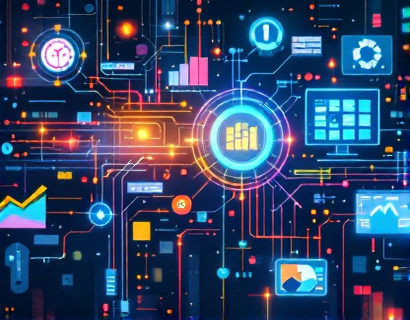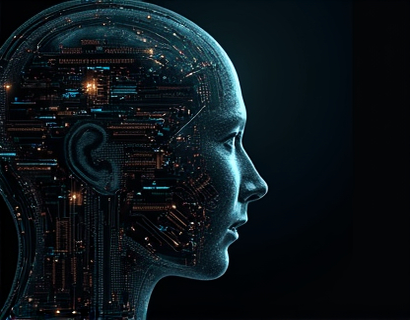Unlocking Next-Gen Engagement: Harnessing AI and Crypto for Transformative Ecosystem Experiences
The digital landscape is rapidly evolving, driven by the convergence of artificial intelligence (AI) and cryptocurrency technologies. This convergence is not just a technological advancement but a paradigm shift in how we interact with digital ecosystems. By leveraging the power of AI and cryptocurrency, we can unlock transformative experiences that redefine user engagement and open new avenues for innovation. This article delves into the potential of these technologies, exploring how they can be harnessed to create more immersive, secure, and efficient digital environments.
The integration of AI and cryptocurrency in digital ecosystems offers a unique opportunity to enhance user experience. AI, with its ability to process vast amounts of data and learn from patterns, can personalize interactions, predict user needs, and optimize system performance. Cryptocurrency, on the other hand, provides a decentralized and secure means of transaction, empowering users with greater control over their digital assets. Together, these technologies can create a synergistic effect that elevates the entire digital experience.
AI-Driven Personalization
One of the most significant benefits of AI in digital ecosystems is its capacity for personalization. By analyzing user behavior, preferences, and historical data, AI algorithms can tailor content and services to individual needs. This level of personalization not only enhances user satisfaction but also increases engagement. For instance, a streaming platform can use AI to recommend shows and movies based on a user's viewing history, ensuring a more enjoyable and relevant experience.
Moreover, AI can dynamically adjust the user interface and experience based on real-time data. For example, a news aggregator can prioritize articles that a user is most likely to read, based on their past interactions and current trends. This adaptive approach keeps users engaged by providing content that is always relevant and timely. In essence, AI transforms static digital environments into dynamic, responsive spaces that evolve with the user.
Enhanced Security through Cryptography
Security is a paramount concern in the digital age, and cryptocurrency technologies offer robust solutions to enhance data protection. Blockchain, the underlying technology of cryptocurrencies, provides a decentralized and immutable ledger that ensures transparency and security. By using blockchain, digital ecosystems can safeguard user data and transactions from unauthorized access and tampering.
Furthermore, cryptographic techniques such as encryption and hashing can be employed to protect sensitive information. These methods ensure that user data remains confidential and intact, building trust and confidence in the digital ecosystem. The combination of AI and cryptography creates a formidable defense mechanism, making it extremely difficult for malicious actors to breach the system.
Decentralized Governance and Incentives
Decentralized governance models, powered by blockchain and AI, can revolutionize how digital ecosystems are managed. Traditional centralized systems often face issues such as bottlenecks, censorship, and lack of transparency. In contrast, decentralized governance allows for a more democratic and transparent decision-making process. Smart contracts, self-executing contracts with the terms directly written into code, can automate and enforce rules, reducing the need for intermediaries.
Incentive mechanisms, such as token rewards, can motivate users to contribute to the ecosystem's growth and maintenance. For example, users who participate in content creation, moderation, or data sharing can be rewarded with tokens, creating a symbiotic relationship between the users and the platform. This not only fosters a sense of community but also aligns user interests with the platform's goals, driving collective success.
Tokenized Economies and Microtransactions
The introduction of cryptocurrency in digital ecosystems enables the creation of tokenized economies, where value can be exchanged in the form of tokens. These tokens can represent various assets, such as content, services, or even virtual goods. The use of tokens facilitates microtransactions, allowing for granular and flexible economic interactions. This is particularly beneficial in scenarios where traditional payment methods are cumbersome or impractical.
For instance, in a digital marketplace, creators can monetize their content through token sales, and users can purchase access or exclusive features using these tokens. This model not only provides creators with a direct revenue stream but also gives users more control over their spending. The transparency of blockchain ensures that transactions are traceable and fair, reducing the risk of fraud and enhancing trust.
AI-Powered Content Creation and Curation
AI can significantly enhance content creation and curation within digital ecosystems. Natural Language Processing (NLP) and machine learning algorithms can generate high-quality content, from articles and social media posts to code and scripts. This automation not only saves time but also ensures a consistent and high standard of content. AI can also curate content by analyzing user preferences and trending topics, presenting a personalized feed that keeps users engaged.
Moreover, AI can assist in content moderation by identifying and filtering out inappropriate or harmful content. This ensures a safer and more pleasant environment for all users. The combination of AI-driven content creation and curation creates a rich and dynamic content ecosystem that adapts to user needs and preferences.
Predictive Analytics and User Insights
AI's ability to analyze large datasets and extract meaningful insights is invaluable for understanding user behavior and preferences. Predictive analytics can forecast user actions, helping digital ecosystems proactively address user needs and improve service offerings. For example, by analyzing usage patterns, a gaming platform can predict which features or updates will be most appealing to its user base, optimizing development efforts and enhancing user satisfaction.
These insights can also inform marketing strategies, enabling more targeted and effective campaigns. By understanding user segments and their behaviors, digital ecosystems can tailor their messaging and offers, increasing conversion rates and user retention. The data-driven approach provided by AI ensures that decisions are based on solid evidence, rather than assumptions.
Cross-Platform Integration and Interoperability
The future of digital ecosystems lies in their ability to integrate seamlessly across different platforms and devices. AI and cryptocurrency technologies facilitate cross-platform integration by providing standardized protocols and interoperable frameworks. This ensures that users can enjoy a consistent and cohesive experience, regardless of the device or platform they are using.
For instance, a user can start interacting with a service on their smartphone and continue on a smartwatch or computer without any disruption. This level of interoperability not only enhances user convenience but also expands the reach and accessibility of digital ecosystems. AI can manage and optimize these integrations, ensuring smooth and efficient interactions.
Challenges and Considerations
While the potential of AI and cryptocurrency in digital ecosystems is vast, there are several challenges and considerations that must be addressed. One of the primary concerns is the regulatory landscape. The use of cryptocurrency and blockchain technology is still evolving, and regulatory frameworks vary widely across jurisdictions. Digital ecosystems must navigate these regulations carefully to ensure compliance and avoid legal pitfalls.
Another challenge is the technical complexity involved in integrating AI and cryptocurrency. Developing robust and secure systems requires expertise in multiple domains, including AI, blockchain, and cybersecurity. Organizations must invest in skilled talent and continuous research and development to stay at the forefront of these technologies.
Additionally, there is the issue of user adoption and education. Many users are still unfamiliar with AI and cryptocurrency concepts, which can hinder widespread adoption. Digital ecosystems need to focus on user education and provide intuitive interfaces to make these technologies accessible and user-friendly.
Future Prospects and Opportunities
The convergence of AI and cryptocurrency holds immense potential for the future of digital ecosystems. As these technologies continue to mature, we can expect even more innovative applications and use cases. For instance, the integration of AI with decentralized finance (DeFi) can create more sophisticated financial services, offering greater flexibility and accessibility.
Moreover, the rise of Web 3.0, a decentralized internet powered by blockchain, will further amplify the impact of AI and cryptocurrency. In this new internet paradigm, users will have more control over their data and digital identities, and AI can enhance this control by providing advanced security and personalization features. The possibilities are endless, and the next generation of digital ecosystems will be shaped by the synergy between AI and cryptocurrency.
In conclusion, the combination of AI and cryptocurrency is not just a technological trend but a transformative force that can redefine user engagement and digital experiences. By embracing these technologies, digital ecosystems can become more intelligent, secure, and user-centric, unlocking new opportunities for innovation and growth. As we move forward, the key will be to harness the power of AI and cryptocurrency responsibly and ethically, ensuring that the benefits are widely shared and the digital landscape continues to evolve in a positive direction.











































